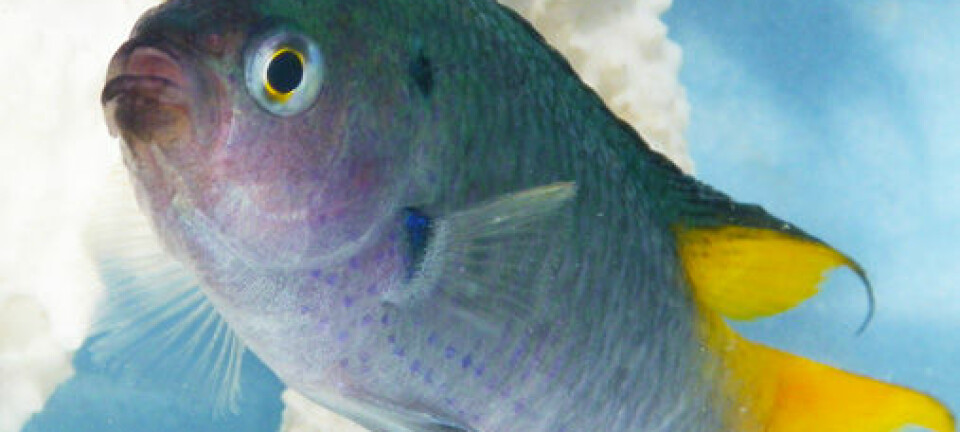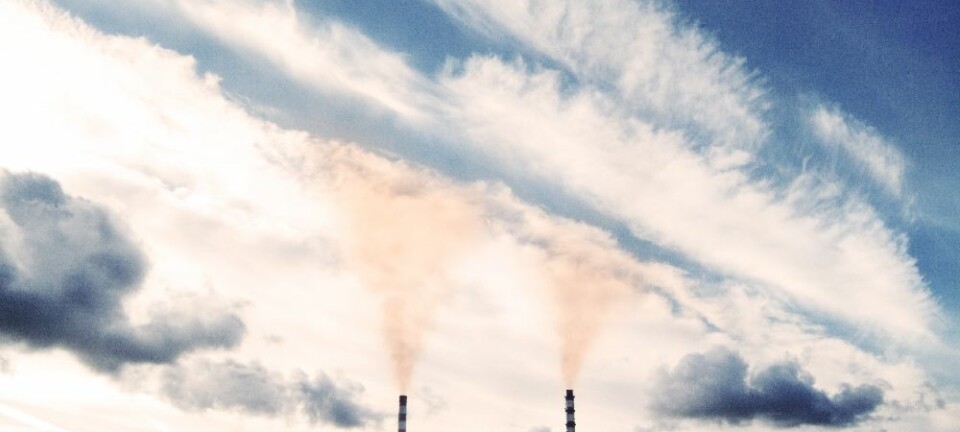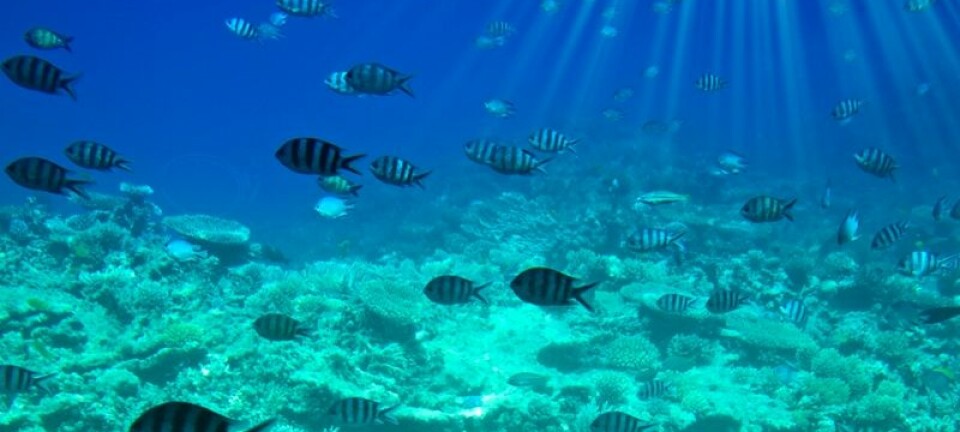An article from Norwegian SciTech News at NTNU
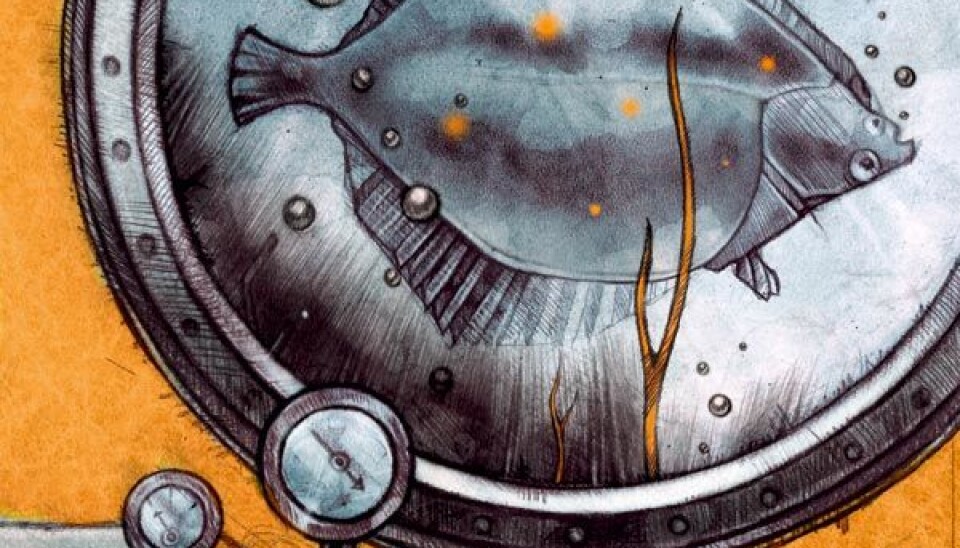
A flounder in fizzy water
It is all well and good to store CO2 under the seabed. But what if the CO2 starts to leak?
Denne artikkelen er over ti år gammel og kan inneholde utdatert informasjon.
First, build a pressure tank.
Then add some corals and a flounder.
Add seawater and CO2 gas.
Wait for about half a year.
This is the recipe to find out what happens to marine life if there is a CO2 leak from undersea storage reservoirs.
An undersea experimental reactor
Tick. Tick. Psss. Tick. Tick. Psss. There's something ticking. And blowing. And ticking again. Just like the sound of someone on a respirator.
We are located on Trondheim waterfront, where the winter’s cold is creeping in through our clothes. At the dock is NTNU’s research boat, Gunnerus, rocking in the waves. Inside, at the ocean laboratory in Brattøra, it is almost as cold as outside. That should come as no surprise, however, since the room we are in has been designed to reflect conditions on the seabed, 300 metres below the water's surface.
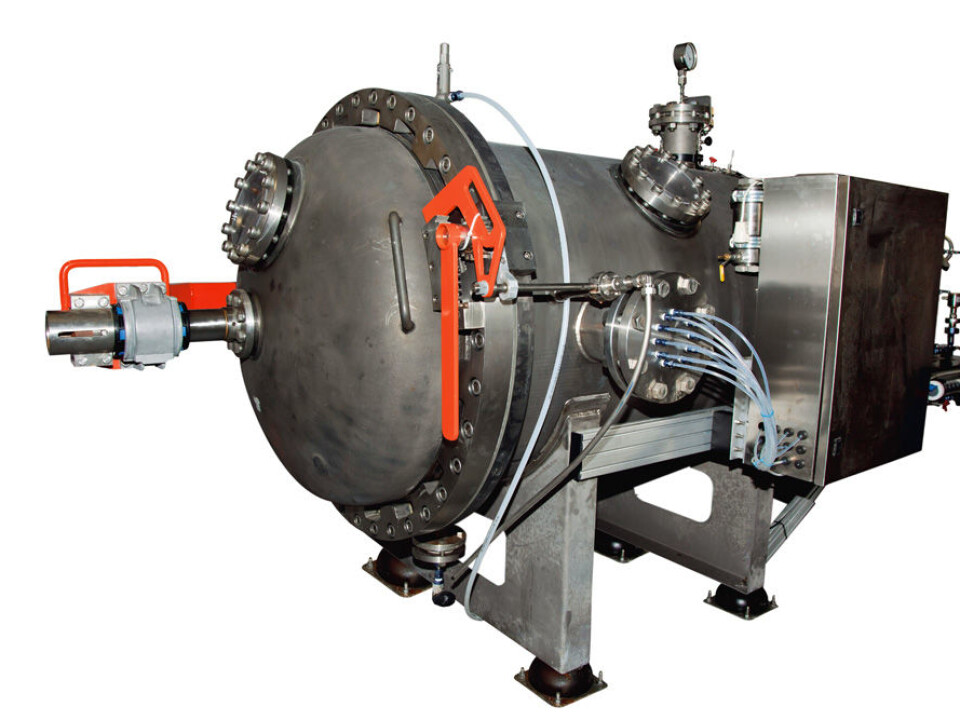
And there, it is cold, quiet and dark. And under high pressure.
To mimic this, scientists at NTNU and SINTEF have developed a large pressure vessel made of titanium. Inside the tank is a box of bottom sediments from Trondheim Fjord. The tank and its layer of bottom sediment will provide answers to what might happen if any of the millions of tonnes of CO2 being pumped into geologic formations under the seafloor begin to seep out.
And this is where the ticking and the hissing come into play. Underneath the research boat, down on the dock, there’s a hose in the ocean. It sucks up seawater, which enters the tank, circulates around, and then drains out again.
Gas to the bottom
But before we go any further: What is Statoil, Norway’s main oil company, doing out there in the North Sea? They’re doing much more than just pumping up the oil and natural gas that make Norway among the richest countries in the world.
In fact, their efforts are the main reason for the tank and the box with the bottom sediment. Increased CO2 in the atmosphere threatens our global climate, and to help save a feverish planet, huge amounts of CO2 have been pumped into reservoirs underneath the sea. Instead of releasing the gas generated by oil straight into the air, it is being stored deep under the seabed.
There are rock formations that can store CO2, and keep it away from the atmosphere. The CO2, which is a fluid under pressure, moves around a little, hovering a bit, but does not resurface.
It sounds both wonderful and terrifying. What happens if the rock suddenly fractures? Can the CO2 cause it to explode? Might there suddenly be a huge explosion of CO2 in the North Sea, like a giant fountain?
Bulging crust
Every year almost a million tonnes of CO2 are being pumped into a ¬geo¬logical formation under the seabed near the Sleipner gas field, on the Norwegian continental shelf. The same is happening at the Snøhvit gas field in northern Norway, and in the Sahara desert in Algeria.
Even if the liquid CO2 does not escape, it can move. Statoil’s measurements from the Sahara show that the Earth’s crust was actually lifted one inch over six years.
Tore Torp is a Statoil consultant working on CO2 storage and a self-appointed foster-father to the test pressure tank. He says that outside of the Tordis field in the North Sea, so much water was pumped down for a test that the rock at the bottom actually cracked.
“Much of the water came up as a nice, small fountain, like you might see in a park. We learned a lot from that, and it can’t happen now, because the rock above the liquid is at least 1000 metres thick. At Snøhvit, CO2 is being stored 2400 metres below the seabed. We also monitor the liquid, mostly by the use of seismic tools,” says Torp.
Seismic monitoring is when sound waves are reflected back to an instrument, which then makes an image that can be compared to a kind of sound X-ray.
Not just from oil and gas
Bjørn Berger, a Statoil adviser, said scientists can always see how the liquid CO2 moves.
“We take a picture of the CO2, put the pictures on top of each other, and look for changes. We create environment maps around all the installations, and our goal is always to prove that the liquid stays there,” says Berger.
He believes it is important to remember that CO2 is also a gas that is produced by life itself.
“It’s really not a toxic gas, per se, but is poisonous if you are exposed to too much of it. There is natural leakage from the Earth, from volcanoes and also from under the sea, for example. The Aegean Sea naturally contains more CO2 than other areas, so the marine life there is unique compared to other places,” says Berger.
But even if reservoir rocks stay intact, and scientists monitor the liquid CO2, Statoil has still found it necessary to spend NOK 5 million to finance the pressure tank, because there remain unanswered questions. For example, what happens if the liquid CO2 escapes through small holes in the seabed? That might be something that would not appear on any seismic scan, but that would just seep out with a constant little hissing sound.
A signature on the ocean floor
One of the many researchers working on this issue is a marine chemist at NTNU named Murat Van Ardelan. He believes that it is far more difficult to detect small leaks than large ones.
“With small leaks, the fluid will first dissolve in the water. With large leaks, the liquid can rise up to the seabed and bubble – like bubbles in a bottle of mineral water. To detect small leaks, we have to look for how CO2 changes marine chemistry and the creatures living at the bottom of the sea. Maybe CO2 has a special signature when it escapes to the ocean floor? Perhaps some bacteria will bloom with an increase in CO2, while others die?” says Van Ardelan.
Together with three master's students from NTNU, he has conducted two tests in the tank to facilitate the search for changes.
“Undersea storage is the most realistic solution we have right now to reduce the amount of CO2 in the atmosphere. Critics say that even if undersea storage does reduce the problem in the atmosphere, there is a risk that part of the problem will just be shifted to local zones where marine animals, plankton and fish are living. I do not think it will, but we are now studying the worst possible scenario in the tank,” says Ardelan.
At last, the flounder
The planned sequence of studies in the tank is to start with chemical processes, then bacteria, then single-celled organisms, mussels and finally cold-¬water corals. But the last creature that will be subjected to testing in the tank is a flounder from which blood samples will be taken while it is inside the tank.
But because the pressure in the tank simulates life at 300 metres beneath the sea, the fish will explode if it is removed directly from the tank. Because of this problem, the tank was built with kind of pressure lock where researchers using a robot arm can pick up the fish inside the tank, put it into the lock, gradually lower the pressure, and then test the fish.
“This has only been attempted in an open glass tank to date. This is the first time this ¬research has been conducted under pressure, and over a longer period,” Torp says.
The only thing we know for certain
Tick. Tick. Psss. Tick. Tick. Psss. It is time to stop the ticking of the tank.
Kathrine Sundeng, Nina Gjøsund and Gøril Aasen Slindre have all written their master’s theses about work with the tank, and are in the first graduating class from NTNU’s “Environmental Toxicology and Chemistry” programme. It is they who have conducted most of the experiments.
The three students begin to empty the tank of water, and then will remove the box containing the sediment. Murat Van Ardelan rattles off a lot of unintelligible names of what all the bacteria are called, and what function they serve. Small bacteria can change the basic features of the ecosystem, he says.
“Although geophysicists say that the caprock can’t be cracked, we do not know that for certain. There could be leaks from old oil drilling holes or existing cracks. What will happen to seawater chemistry and marine life if there is a leak? The only thing we know for certain is that CO2 will acidify the ocean,” says Ardelan.







